A lot of the skill comes from knowing the sport and clicking your shutter at the right moment. But your camera settings are just as important when photographing sports. You must know the exposure triangle (shutter speed, aperture, and ISO). And knowing about burst mode is important too. [ExpertPhotography is supported by readers. Product links on ExpertPhotography are referral links. If you use one of these and buy something, we make a little bit of money. Need more info? See how it all works here.]
Sports Photography Settings (Camera Settings & Tips)
Here are our tips for capturing super-sharp sports photos. After reading this article, you’ll never miss a goal, try, or home run!
1. Use a Fast Shutter Speed to Freeze the Action
A fast shutter speed is vital for sports photography. There’s always a risk of motion blur when you have fast-moving subjects. And if you’re photos are blurry, the viewers won’t be able to see the action. Using a fast shutter speed reduces the risk of motion blur. You should think of 1/500 s as your minimum speed. You need to go to 1/1000 s or faster for cycling and motorsports. If your subjects move faster, you need a faster shutter speed. Shutter priority mode is a good option for sports photography. It’s a semi-automatic mode that lets you control the shutter speed. Keep your shutter speed as fast as you need it to be while the camera takes care of the aperture and ISO. If you get some test shots during the pre-game warmup, great! But remember, everyone moves at full pace when the whistle blows. You might need a faster shutter speed for the actual event.
2. Choose a Wide Aperture for a Bokeh Effect
The bokeh effect is the blurred quality in the background or foreground of some photos. It’s the result of a shallow depth of field. And to get a shallow depth of field in your photos, you need to use a wide aperture. Apertures can be confusing at first. F-stop numbers represent them. The wider the aperture, the smaller the f-number. So f/2.8 is a wider aperture than f/16. A wide aperture like f/2.8 or f/1.4 gives you a shallow depth of field. And this gives your photos that soft blur in the background. And as long as your focus is correct, your subject still looks sharp. Using a wide aperture also allows you to use a fast shutter speed. A wide aperture lets more light through. So you can capture the perfect exposure when you use a fast shutter. But I wouldn’t use aperture priority mode. It’s best if you use a fast shutter speed. Many sports photographers like to use a telephoto lens. They’re great for getting close to the action. But telephoto lenses have smaller aperture ranges than a standard zoom lens. The max aperture of a telephoto might be f/5.6 instead of f/1.4. But the magnification effect of a telephoto lens means you can still achieve a bokeh effect.
3. Increase Your ISO Settings for More Light
There’s nothing more pleasant than shooting a cricket match on a summer day. But you’re never guaranteed sunshine. And sports events aren’t always outside or during the day. You must deal with dark conditions during those night shoots or indoor events. So what’s the best way to get the most out of your camera when shooting sports in difficult conditions? Increase your ISO settings. When conditions are dark, you need as much light as possible. You’ll probably use a wider aperture, giving you more light. But the ISO also needs to increase when you need fast shutter speeds. The higher you go with ISO, the higher the risk of digital noise. But even with beginner DSLR cameras, you can push the ISO to 1600. This helps maintain excellent image quality. You can go even higher if you use a more advanced camera and still capture fantastic sports photos.
4. Use Autofocus for More Creative Freedom
A good autofocus system is a great feature for sports photographers. You must consider the aperture, shutter speed, and ISO while keeping your eye on the game. With manual focusing on top of that, your head will spin. Autofocus systems on modern cameras work best in high-contrast situations. Camera autofocus is easier, with a clear difference between the subject and surroundings. The difficulty comes when light and contrast are low. Many professional-level cameras have advanced autofocuses. They lock onto a moving subject and track them across the frame. They ensure you get some great shots no matter how fast they move. Autofocus systems in lower-level cameras aren’t as reliable. They need more contrast to work well. This means you might need to find the best vantage point with better contrast to take your sports photos.
5. Use Continuous AF for Predictive Tracking
Predictive tracking is where your AF system predicts the movement of the subject. Internal AI tracks the subject by predicting where it will be next. It’s impressive stuff. But you only find an autofocus system this sophisticated at the pricier end of the market. A camera with a continuous autofocus mode is perfect for shooting sports photography. On Canon cameras, continuous focusing is labeled AF or AI Servo. On Nikon and Sony machines, select AF-C. This mode activates predictive tracking when the AF system detects a moving subject. It continuously monitors the focus distance. When the distance from the camera to the subject changes, the focus is adjusted. Do you want to compose a shot in which none of the AF points cover the subject? If so, you need to lock the focus distance by pressing the AF lock button. And for greater accuracy, choose a single AF point. Make sure it’s in the area where most of the action is taking place.
6. Use Back Button Focus for Fast Focusing
Back button focus is when you move the focusing function. It goes from the shutter button to one of the buttons on the back of your camera. It’s the most efficient way of using autofocus. Instead of pressing the shutter button halfway down to focus, you press a button at the back of your camera. You use your thumb for the back button and your pointer finger to press the shutter. It might sound complicated at first. But it’s quick. And every second counts in sports photography. Pair back button focus and continuous focus. This helps you get excellent focus with difficult shots. If your subject is moving, you can hold down the focus button to track it and release the shutter at any time.
7. Use Burst Mode So You Never Miss a Shot
Burst or continuous shooting mode is another important feature of sports photography. Your camera captures several images in quick succession. So you can capture those moments where if you blink, you miss it. All modern digital cameras have a burst mode, ranging from 8 to 30 frames per second (fps). DSLRs have a burst mode. But mirrorless cameras are the front-runners in this department. They use an electronic shutter which allows for a faster burst speed. The problem with burst mode is the storage. Your memory card can fill up fast when you’re shooting at 18 fps. It’s best to save the burst mode when you need it.
8. Shoot In JPEG to Save Card Memory
Someone may have hammered into you that you should always shoot RAW images. But shooting in JPEG is beneficial for sports photography. While RAW is better for editing photos, they take up more memory. JPEGs are smaller, so you can fit more on your memory card. And when you’re shooting sports action, memory cards can fill up fast. You don’t want to run out of space when the game goes into overtime.
Conclusion
Sports can be fast and ferocious. And a sports photographer needs to be ready to capture the action. That comes down to knowledge of the game and knowledge of your camera. So sports photography settings are crucial! It helps if you have a fast shutter speed and a wide aperture. Then you need to master your autofocus and your burst mode. And shooting in JPEG is handy advice for sports photography. These sports photography tips are sure to help you capture the action. And perfecting your camera settings means you won’t miss any of the action. Check out our Photography Unlocked e-book. It will help you master your camera settings no matter what you’re shooting!
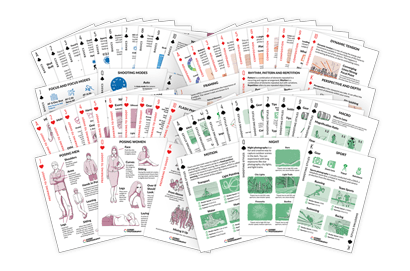

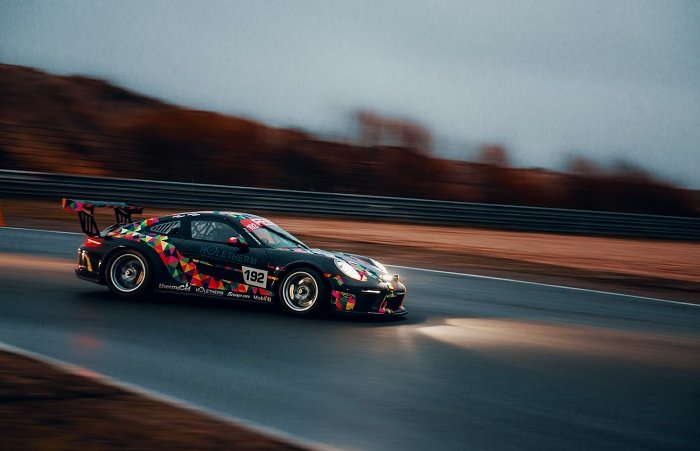
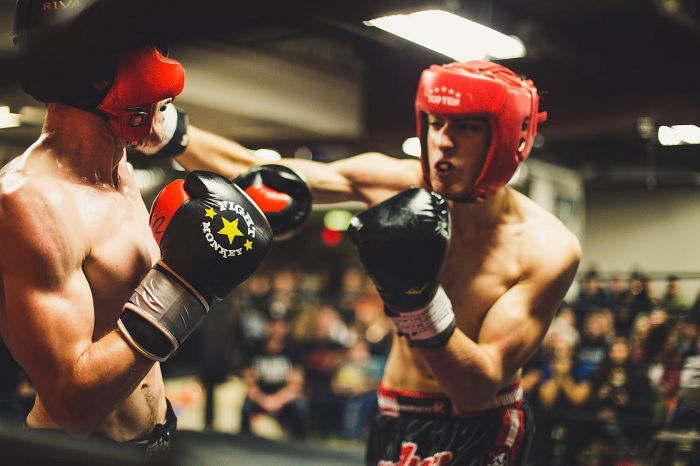
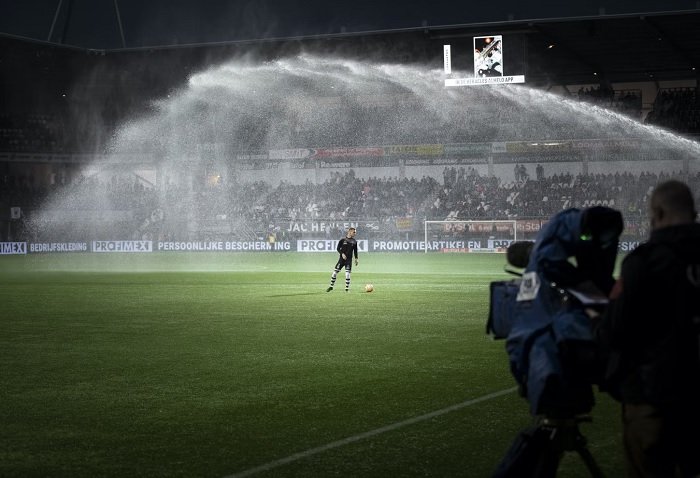
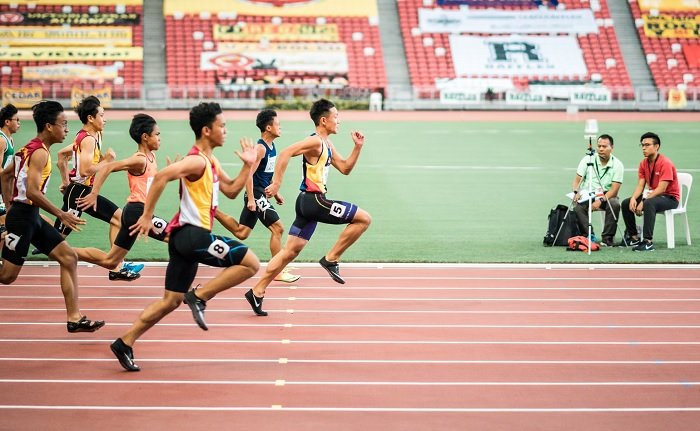
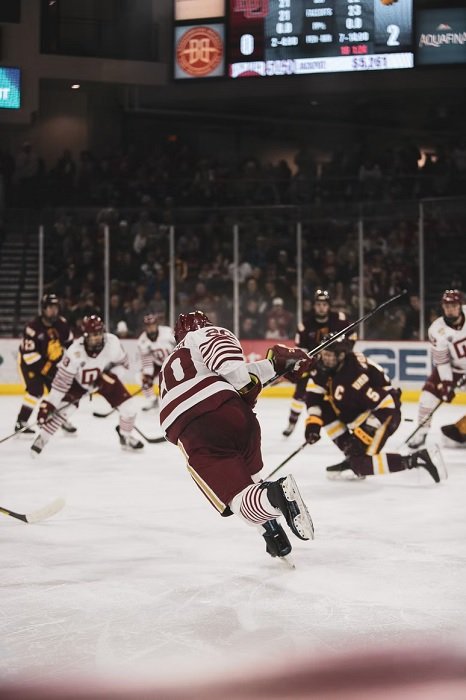
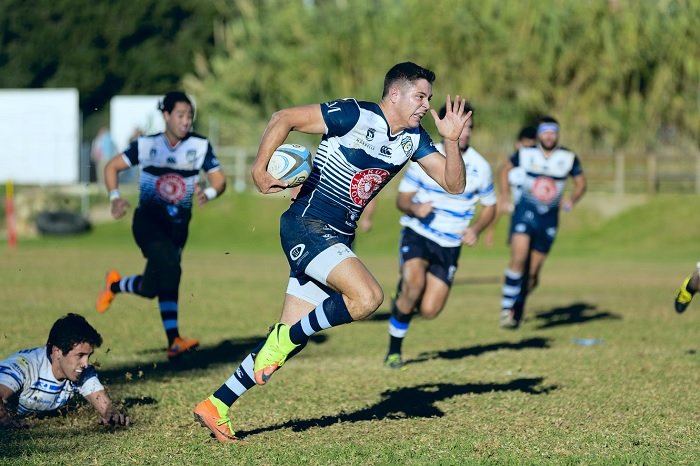
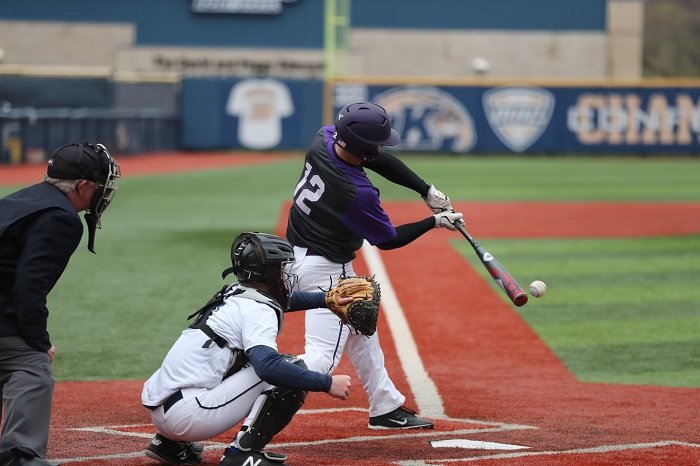
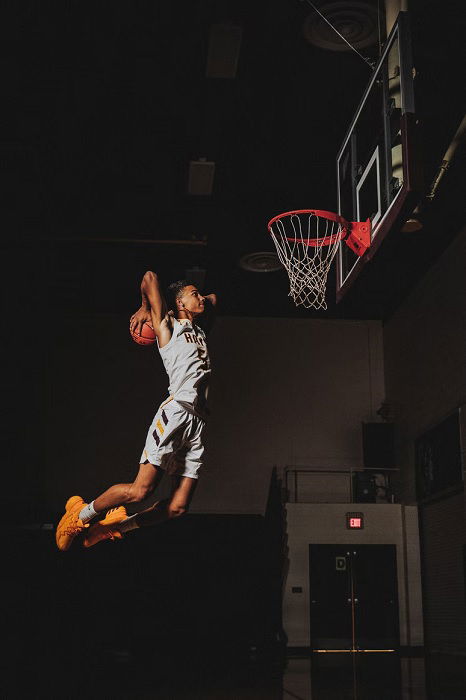


title: “Sports Photography Settings Camera Settings Tips” ShowToc: true date: “2023-01-03” author: “Larry Barrett”
A lot of the skill comes from knowing the sport and clicking your shutter at the right moment. But your camera settings are just as important when photographing sports. You must know the exposure triangle (shutter speed, aperture, and ISO). And knowing about burst mode is important too. [ExpertPhotography is supported by readers. Product links on ExpertPhotography are referral links. If you use one of these and buy something, we make a little bit of money. Need more info? See how it all works here.]
Sports Photography Settings (Camera Settings & Tips)
Here are our tips for capturing super-sharp sports photos. After reading this article, you’ll never miss a goal, try, or home run!
1. Use a Fast Shutter Speed to Freeze the Action
A fast shutter speed is vital for sports photography. There’s always a risk of motion blur when you have fast-moving subjects. And if you’re photos are blurry, the viewers won’t be able to see the action. Using a fast shutter speed reduces the risk of motion blur. You should think of 1/500 s as your minimum speed. You need to go to 1/1000 s or faster for cycling and motorsports. If your subjects move faster, you need a faster shutter speed. Shutter priority mode is a good option for sports photography. It’s a semi-automatic mode that lets you control the shutter speed. Keep your shutter speed as fast as you need it to be while the camera takes care of the aperture and ISO. If you get some test shots during the pre-game warmup, great! But remember, everyone moves at full pace when the whistle blows. You might need a faster shutter speed for the actual event.
2. Choose a Wide Aperture for a Bokeh Effect
The bokeh effect is the blurred quality in the background or foreground of some photos. It’s the result of a shallow depth of field. And to get a shallow depth of field in your photos, you need to use a wide aperture. Apertures can be confusing at first. F-stop numbers represent them. The wider the aperture, the smaller the f-number. So f/2.8 is a wider aperture than f/16. A wide aperture like f/2.8 or f/1.4 gives you a shallow depth of field. And this gives your photos that soft blur in the background. And as long as your focus is correct, your subject still looks sharp. Using a wide aperture also allows you to use a fast shutter speed. A wide aperture lets more light through. So you can capture the perfect exposure when you use a fast shutter. But I wouldn’t use aperture priority mode. It’s best if you use a fast shutter speed. Many sports photographers like to use a telephoto lens. They’re great for getting close to the action. But telephoto lenses have smaller aperture ranges than a standard zoom lens. The max aperture of a telephoto might be f/5.6 instead of f/1.4. But the magnification effect of a telephoto lens means you can still achieve a bokeh effect.
3. Increase Your ISO Settings for More Light
There’s nothing more pleasant than shooting a cricket match on a summer day. But you’re never guaranteed sunshine. And sports events aren’t always outside or during the day. You must deal with dark conditions during those night shoots or indoor events. So what’s the best way to get the most out of your camera when shooting sports in difficult conditions? Increase your ISO settings. When conditions are dark, you need as much light as possible. You’ll probably use a wider aperture, giving you more light. But the ISO also needs to increase when you need fast shutter speeds. The higher you go with ISO, the higher the risk of digital noise. But even with beginner DSLR cameras, you can push the ISO to 1600. This helps maintain excellent image quality. You can go even higher if you use a more advanced camera and still capture fantastic sports photos.
4. Use Autofocus for More Creative Freedom
A good autofocus system is a great feature for sports photographers. You must consider the aperture, shutter speed, and ISO while keeping your eye on the game. With manual focusing on top of that, your head will spin. Autofocus systems on modern cameras work best in high-contrast situations. Camera autofocus is easier, with a clear difference between the subject and surroundings. The difficulty comes when light and contrast are low. Many professional-level cameras have advanced autofocuses. They lock onto a moving subject and track them across the frame. They ensure you get some great shots no matter how fast they move. Autofocus systems in lower-level cameras aren’t as reliable. They need more contrast to work well. This means you might need to find the best vantage point with better contrast to take your sports photos.
5. Use Continuous AF for Predictive Tracking
Predictive tracking is where your AF system predicts the movement of the subject. Internal AI tracks the subject by predicting where it will be next. It’s impressive stuff. But you only find an autofocus system this sophisticated at the pricier end of the market. A camera with a continuous autofocus mode is perfect for shooting sports photography. On Canon cameras, continuous focusing is labeled AF or AI Servo. On Nikon and Sony machines, select AF-C. This mode activates predictive tracking when the AF system detects a moving subject. It continuously monitors the focus distance. When the distance from the camera to the subject changes, the focus is adjusted. Do you want to compose a shot in which none of the AF points cover the subject? If so, you need to lock the focus distance by pressing the AF lock button. And for greater accuracy, choose a single AF point. Make sure it’s in the area where most of the action is taking place.
6. Use Back Button Focus for Fast Focusing
Back button focus is when you move the focusing function. It goes from the shutter button to one of the buttons on the back of your camera. It’s the most efficient way of using autofocus. Instead of pressing the shutter button halfway down to focus, you press a button at the back of your camera. You use your thumb for the back button and your pointer finger to press the shutter. It might sound complicated at first. But it’s quick. And every second counts in sports photography. Pair back button focus and continuous focus. This helps you get excellent focus with difficult shots. If your subject is moving, you can hold down the focus button to track it and release the shutter at any time.
7. Use Burst Mode So You Never Miss a Shot
Burst or continuous shooting mode is another important feature of sports photography. Your camera captures several images in quick succession. So you can capture those moments where if you blink, you miss it. All modern digital cameras have a burst mode, ranging from 8 to 30 frames per second (fps). DSLRs have a burst mode. But mirrorless cameras are the front-runners in this department. They use an electronic shutter which allows for a faster burst speed. The problem with burst mode is the storage. Your memory card can fill up fast when you’re shooting at 18 fps. It’s best to save the burst mode when you need it.
8. Shoot In JPEG to Save Card Memory
Someone may have hammered into you that you should always shoot RAW images. But shooting in JPEG is beneficial for sports photography. While RAW is better for editing photos, they take up more memory. JPEGs are smaller, so you can fit more on your memory card. And when you’re shooting sports action, memory cards can fill up fast. You don’t want to run out of space when the game goes into overtime.
Conclusion
Sports can be fast and ferocious. And a sports photographer needs to be ready to capture the action. That comes down to knowledge of the game and knowledge of your camera. So sports photography settings are crucial! It helps if you have a fast shutter speed and a wide aperture. Then you need to master your autofocus and your burst mode. And shooting in JPEG is handy advice for sports photography. These sports photography tips are sure to help you capture the action. And perfecting your camera settings means you won’t miss any of the action. Check out our Photography Unlocked e-book. It will help you master your camera settings no matter what you’re shooting!











